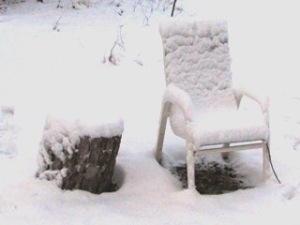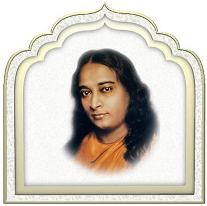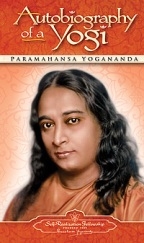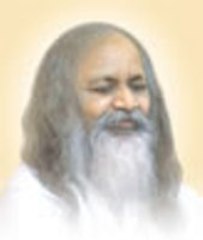Pilgrimage Statistics
Cumulative Days Riding: 171 Cumulative Days Blogging: 156
Today’s Mileage: 5 Total Trip Mileage: 1139
National Day of Prayer in United States: National Day of Prayer is held on the first Thursday of May each year, inviting Americans of all faiths to pray for the country and its leaders.
Greetings fellow pilgrims! I am reminded today why one of my favorite statements about technology and electronics is” “just when you think it is your friend it turns on you!” I rode the bike this afternoon and dictated my posting concerning today as the National Day of Prayer. Then when I sat down to transcribe it I found that the tape was blank! For some reason it did not record so I will have to try and recreate it from memory. Here goes…
I hope that everyone has taken a moment during the day to offer a prayer in whatever way is appropriate according to your belief system. I feel the need to add this qualifier (“in whatever way”) because sadly the events of the day have been marred by controversy. I say sadly because our community, nation and world can use all the help we can muster to set aside our differences and come together to face our growing shared problems (terrorism, global climate change, dwindling resources, conflict and war). However, even something as promising as a call for all people to turn toward the divine for help and guidance has become a derisive issue.
Two issues seem to provide fuel for this controversy. One centers on the issue of whether it is appropriate to have an “official” day of prayer; the second is a question of what constitutes an appropriate prayer.
A recent court decision, which is being appealed, sided with the argument of those individuals who believe it is inappropriate to have an officially sanctioned day of prayer as this represents the government sanctioning religion in general. Whether this religion is practiced by a majority of the people does not matter as the backers of this legal challenge believe it breaches the separation of church and state. These individuals will often point out that existing laws that are written in inclusionary manners are often ignored or actively flaunted by elected officials who use their proclamations of faith for political gain.
Personally, I do not see a problem with the government sanctioning a day of prayer as long as there is no official prayer and individuals of differing faiths or no faith at all are not subjected to exclusionary prayers. An exclusionary prayer is one that proclaims or insinuates that there is only one valid path, valid name, valid experience associated with the divine. Such prayers may outright condemn as false or heretical any and all other paths and names for the divine or divine experiences.
Recently at a local county council meeting atheists, secular humanists, and two groups of Buddhist were made (they were given no warning and/or before the fact choice) to sit through an “in the name of Jesus Christ our Savior” opening prayer that specifically targeted with condemnation abortion providers and gays. The council member who delivered the meetings opening prayer offered no apology when a person in attendance complained. How do you think the Buddhists in attendance (community members, taxpaying citizens, who were there to request the county’s recognition of Buddha’s birthday) felt? Were they made to feel uncomfortable and excluded simply because a “devout Christian” did not want to miss an opportunity to preach his message, which happened to be one of hate and exclusion in this case.
Just this last week I sat through a graduation ceremony for a local state supported university. While most of the individuals in attendance were likely Christians, the opening and closing invocations, which were given by a member of the school’s board of trustees, ended with proclamations about Jesus Christ. In addition, the US Senator who was the commencement speaker also worked into his talk mention of Jesus Christ. Curiously, he finished his talk by sending off the graduates into the world with the advice to “make lots of money!” No call to rise up and transcend our needs and desires for the greater good of the people and nation. No challenge to aim for Mars, cure cancer, help clean up politics, just a call to produce and consume!
I am living in the Bible Belt so I recognize the importance of faith and religion in people’s lives. It is an important part of my personal life. However, it is troubling and unsettling to see individuals who represent all of the people of the county, state, country (elected officials and University board of trustee members) act as if there is no valid diversity of beliefs and faiths. It seems to me the least they can do is to use a pluralistic inclusionary invocation at public meetings. If someone in attendance wants to mutter the name Jesus Christ under their breath while their neighbor mutters Buddha or Goddess, or just takes a deep breath and relaxes, how does this deny anyone their “right” to their faith? Does it matter at all that I have the right to sit in a public meeting (this is not a church service or revival) without having to hear someone “proclaiming their faith” in ways that insinuate that I, my children and my fellow church members are somehow misguided, wrong and “going to hell.” Again, I am not attending their church or revival, I am not speaking about the ten commandment signs they place in their yards, I am speaking about a tax payer funded meeting, conducting “official business” where I have to just sit and bite my tongue, I guess because I am in the minority!
It is my understanding that the reason we have a constitution is to protect the minorities, as the majority can vote in the leaders who write the laws. Therefore the courts and the constitution are there to protect the non-dominant races, faiths, sexual orientations, ethnic groups, and political groups.
Back in the Fall I blogged about the importance of great teachers, most being guided by profound deep faith in the divine. I included Martin Luther King, Nelson Mandela, Mahatma Gandhi, and Billy Graham. Rev. Graham’s son Franklin Graham has placed himself in the center of the ongoing controversy about today’s day of prayer. It seems that he was invited to speak at the Pentagon but this invitation was later withdrawn because of some very negative things he said in an interview about the Islamic faith.
While Franklin certainly has every right to free speech he needs to recognize, as I have taught my sons, that the things we say have consequences. You can’t go saying negative things about a major religious tradition which will be part of an ecumenical Day of Prayer, with the purpose to “bring together” the community, and expect to be welcomed. To add insult to injury he now claims that this is all part of some systematic affront toward white Evangelical Christians by President Obama.
In a Tuesday USA Today interview he was reported to have said: “Muslims do not worship the same ‘God the Father’ I worship.” He also took a swipe at Hinduism, saying, “No elephant with 100 arms can do anything for me. None of their 9,000 gods is going to lead me to salvation. We are fooling ourselves if we think we can have some big kumbaya service and all hold hands and it’s all going to get better in this world. It’s not going to get better.”
Is it any wonder why the organizers of the Pentagon service uninvited Franklin Graham? He proclaims to know what Muslins believe and then displays his lack of knowledge about the Hindu deities (Genesha has an elephant head but only four arms; Vishnu is often pictured with multiple sets of arms). Again I have no problem with Franklin Graham offering whatever form of Christian prayer he chooses at private gatherings or public religious gatherings, but not at officially government sanctioned event that are undertaken to bring together our diverse communities of faith.
One final point; as I stood in the locker room at my gym this morning Franklin came onto CNN, which was playing on the locker room TV and made a timid statement that he can only be expected to pray in the way he was taught to pray and in the way he believes. He may believe this to be the truth, but if we accept this reasoning and logic then a lot of people who had in the past to change, adapt and adjust might have been “off the hook.” If a racist Southern sheriff could have just said “that was the way I was raised” as an argument for why he should not be expected to follow the new civil rights laws, or people opposed to women’s new found right to vote refusing to give them a ballot because they still believe in “the old way.” There are many loving, devout Evangelical Christians who can sit in a meeting and hear a non-denominational prayer without feeling that their faith has be slighted. They might even listen to a prayer by a Hindu or Muslim and see the similarity in all forms of prayer. If Franklin Graham wants to limit himself to exclusive Christian prayers then I suggest he stick with his church and his revivals. If he wants to be accepted into the larger faith community than I suggest he learn how to speak to the heart of all faith and religions, free of any denominational or specific faith trappings.
Just a quick aside, when I served as the Chaplin for my son’s Boy Scout troop I often lead prayers that called on the boys to look within themselves and toward the divine for strength and answers. It was not a Taoist prayer, or a Unitarian Universalist prayer, it was an inclusive upbeat non-denominational prayer. I did it! I challenge Rev. Franklin Graham to do the same!
If you have enjoyed the blog please sign up for stationarypilgrim’s e-mail notification by going to the upper right corner of this page!



























 How does a young man from the plains of the Dakotas come to experience Hinduism and its teachings? The answer is in California! During my time in the US Navy I was stationed in southern California, a fascinating place for a wide-eyed youth. Every other street corner was inhabited by a new religion or cultural group!
How does a young man from the plains of the Dakotas come to experience Hinduism and its teachings? The answer is in California! During my time in the US Navy I was stationed in southern California, a fascinating place for a wide-eyed youth. Every other street corner was inhabited by a new religion or cultural group!  This caused me to wonder about what other belief systems existed in the world which the nuns who directed my Catholic education had failed to mention. While intrigued by the fellowship’s teachings, especially the pluralistic nature of Hindu beliefs, I did not join the movement. I was a pilgrim on a new and fascinating journey, checking out the different paths and only sampling their offerings!
This caused me to wonder about what other belief systems existed in the world which the nuns who directed my Catholic education had failed to mention. While intrigued by the fellowship’s teachings, especially the pluralistic nature of Hindu beliefs, I did not join the movement. I was a pilgrim on a new and fascinating journey, checking out the different paths and only sampling their offerings! Maharishi Yogi founder of TM
Maharishi Yogi founder of TM










